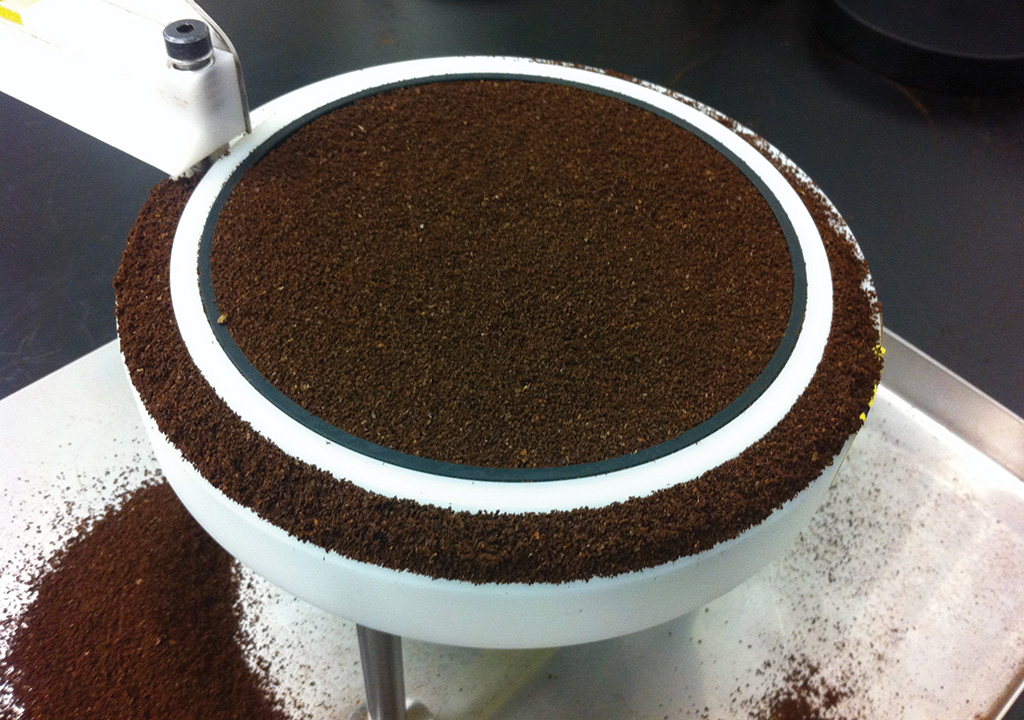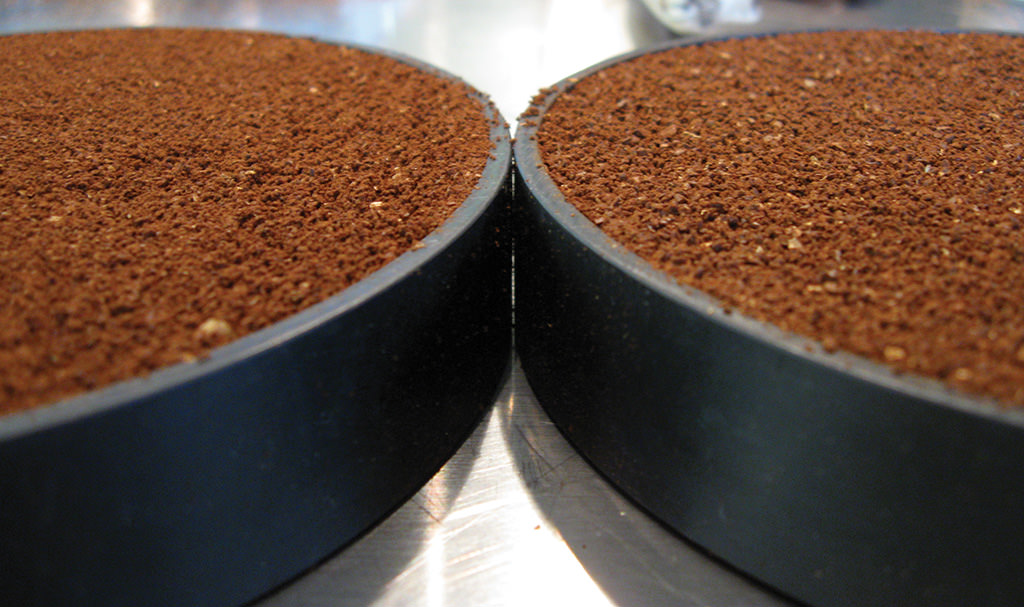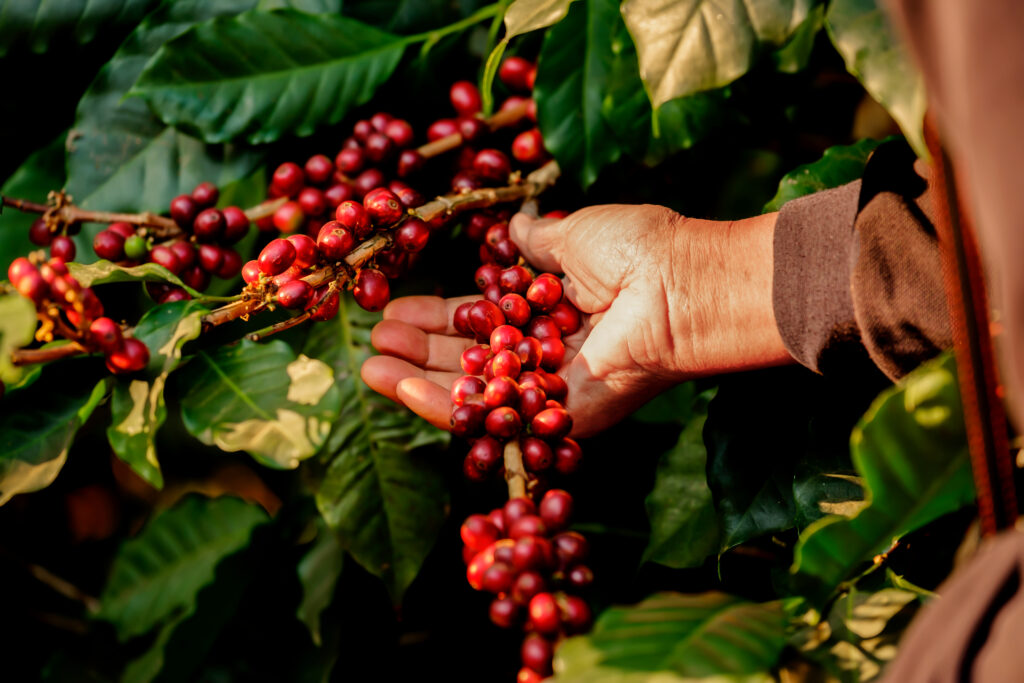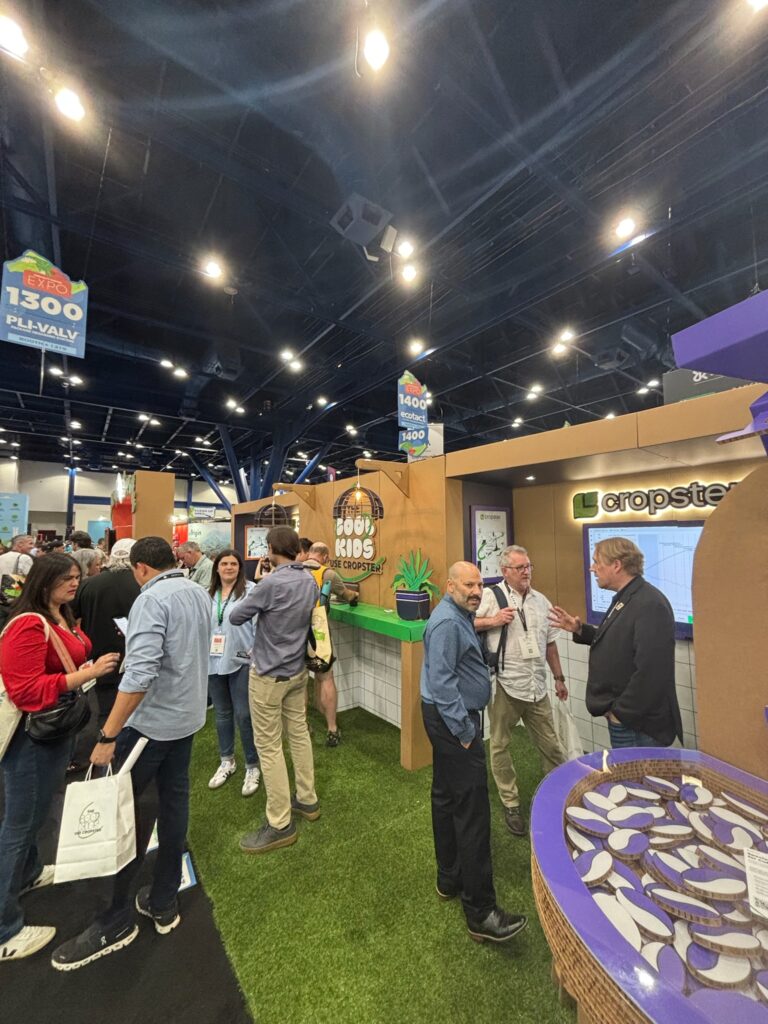ROAST ANALYSIS IS A CRITICAL STEP in ensuring finished-product quality and consistency in the roasting process. For the majority of coffee roasters, roast analysis is performed by sensory evaluation – both visual and taste evaluation (cupping) executed at the individual roast batch level. Many roasters supplement sensory evaluations with one or more objective measurements.
Regardless of the method of analysis, the most important components in evaluating quality are determining which measurements are critical to quality, deciding the most appropriate analysis to be performed and, importantly, identifying the variables that affect measurements.

A prototype of a leveling device designed for sample preparation, pictured with an Agtron sample dish. (Photo Credit: Chris Hallien)
Visual Evaluation
The prevailing method for roast analysis is visual evaluation (or inspection). As simple and intuitive as it may seem, there are a number of factors that impact this process. No standard best practices exist for visual inspection of roasted coffee. The field of sensory science provides guidance for performing visual evaluation and, while the entirety of recommendations may seem excessive or impractical, there are several factors relevant to roast analysis. Utilization of color standards, common in color inspection for other industries, is rarely employed in coffee evaluation. In coffee, color standardsalso known as reference samplesare roasted coffee samples pulled from production and approved as color targets, which then serve as a visual reference for subsequent roast comparison.
Best practices recommend the following:
- sample size of 3 inches by 5 inches (7.5 centimeters by 12.5 centimeters);
- sample viewing geometry of either 0 degrees or 45 degrees; and
- samples oriented side by side.
Head over to Roast to read the rest of the article!



